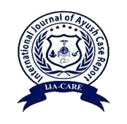Homoeopathic Management of Lower Abdominal Sub-Parietal Hematoma- A single Case Report
Abstract
Hematoma is a blood collection in an extravascular space. It results from bleeding from a vascular structure. Abdominal hematoma is a condition characterized by the accumulation of blood in the abdominal cavity, often resulting from trauma or surgery. While conventional medical approaches such as surgery and blood transfusions are commonly employed. Now a days, there is growing interest in complementary and alternative therapies. This article explores the management of large abdominal hematomas using homeopathic medicine. An obese female patient, 52years old, came to our clinic after fall from stairs, on abdomen. She had lower abdomen pain, soreness, ecchymosis and lump of 56*33*48 mm. On the basis of clinical exminations and USG findings the case was diagnosed as abdominal hematoma. Bellis perennis 1000 single dose in first visit, followed by Bellis perennis 1000 two doses in fourth visit and Bellis perennis 10000 single dose in sixth visit to cure the abdominal hematoma. The improvement of the case was assessed by Ultrasound reports at baseline, during and after treatment. The rationale of this report reflects the effective management of abdominal hematoma cases with individualized Homoeopathy

This work is licensed under a Creative Commons Attribution-NonCommercial-NoDerivatives 4.0 International License.

